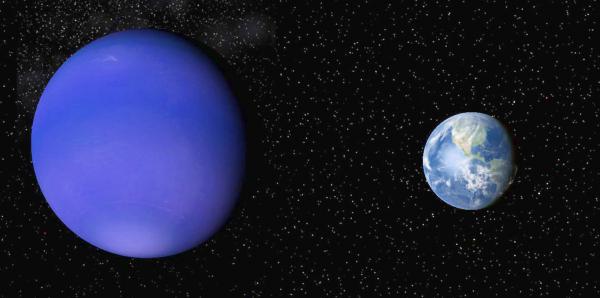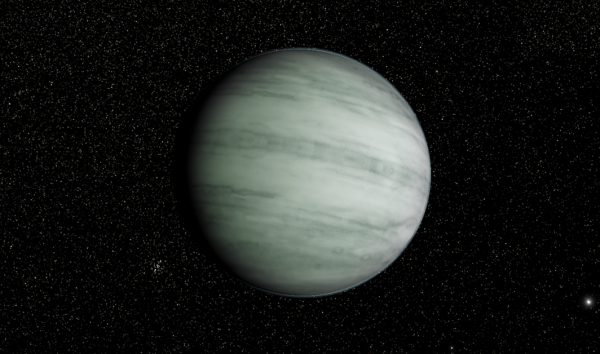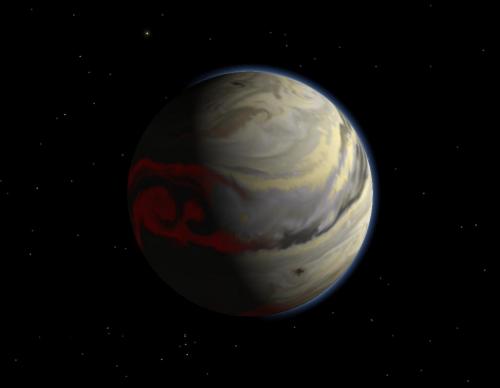BY LETTER
Gas Dwarf
Gaseous or Nebulous Superterrestrial worlds up to 24 x Earth's mass | |
 Image from Steve Bowers | |
| The warm gas dwarf Kepler 11f compared in size to Earth | |
These planets are commonly known as Gas Dwarfs, but are classified as Nebulous Superterrestrials in the NolWocs system. Kepler 11-f was the first such planet ever discovered, 2000 ly from Sol in the Cygexpa volume. Although Gas Dwarfs often retain a substantial amount of hydrogen in their atmosphere, this will tend to bleed off over time by the mechanism of Jeans escape, a process which is highly dependent on temperature.
 Image from Steve Bowers | |
| Tartarus, a Gas Dwarf in the Tau Ceti system. | |
 Image from Steve Bowers | |
| Fira,a gas dwarf with an atmosphere which has a notably asymmetric circulation | |
Related Articles
Development Notes
Text by Steve Bowers
Initially published on 03 August 2011.
Initially published on 03 August 2011.






